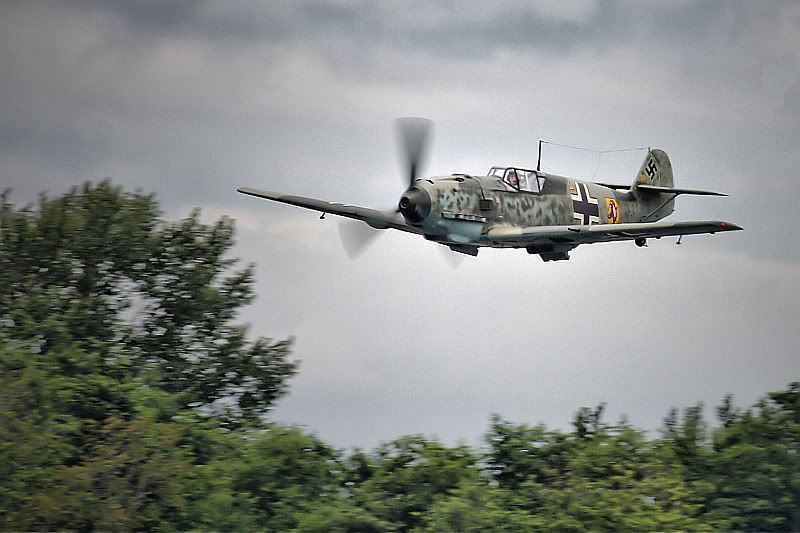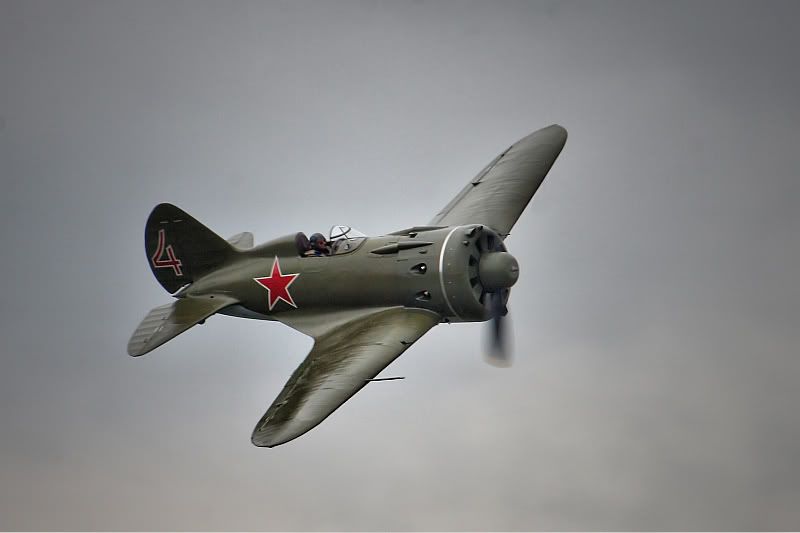Eastern Front adversaries
a couple more from the flight demo yesterday with the Bf109 and the Polikarpov I-16, two fighters that faced each other in the skies over Russia in the early days of WWII... 40D, 100-400 @ 400mm, various settings...








~ Rocky
"Out where the rivers like to run, I stand alone, and take back something worth remembering..."
Three Dog Night
www.northwestnaturalimagery.com
"Out where the rivers like to run, I stand alone, and take back something worth remembering..."
Three Dog Night
www.northwestnaturalimagery.com
0
Comments
Nice work on capturing these planes. I'm always amazed at how much smaller the combat fighters of WW11 are compared to the current crop.
Tom
actually, Tom, the I-16 was about on par with the Bf109 in terms of performance up to 10,000 feet (the open cockpit limited them to relatively low altitudes), and was more maneuverable and rugged. the real advantage the Germans had was much more experienced pilots, veterans of battles from the Spanish Civil War through the Battle of Britain.
yeah, the size of these little guys is really amazing, compared to, say, an F-18... then again, considering what the modern fighters are asked to do, and all the stuff the military tries to hang all over them, that added size isn't really surprising.
"Out where the rivers like to run, I stand alone, and take back something worth remembering..."
Three Dog Night
www.northwestnaturalimagery.com
However,the German plane enjoyed a significant top speed advantage ( over 60 MPH ), better rate-of-climb numbers, and higher service ceiling ( as you point out ). Given pilots of equal capabilities, the 109 is taking the I-16 in the vast majority of encounters. Considering the competence level weighing in on the German side, those early days were a slaughter.
I'm looking forward to more great shots,
Tom
Tom,
actually, the 109E-3 was only about 25mph faster than the I-16, but in terms of overall performance, it offered advantages in diving speed (well over 430 mph), and modestly better rate of climb (3100 ft/min vs 2900 for the I-16). the German pilots quickly learned to use the 109's superior altitude and diving speed to conduct slashing attacks on the hapless Russians, who had less than half the 109's 36,000-ft service ceiling. later 109 models, like the F/G, were significantly faster than the E, upwards of 370 mph in level flight at sea level, and over 400 at 20,000 ft for the 109G. of course, by the time the 109G's hit the front lines, the I-16s - those that remained, anyway - had pretty much been retired.
"Out where the rivers like to run, I stand alone, and take back something worth remembering..."
Three Dog Night
www.northwestnaturalimagery.com
pictures sweet.